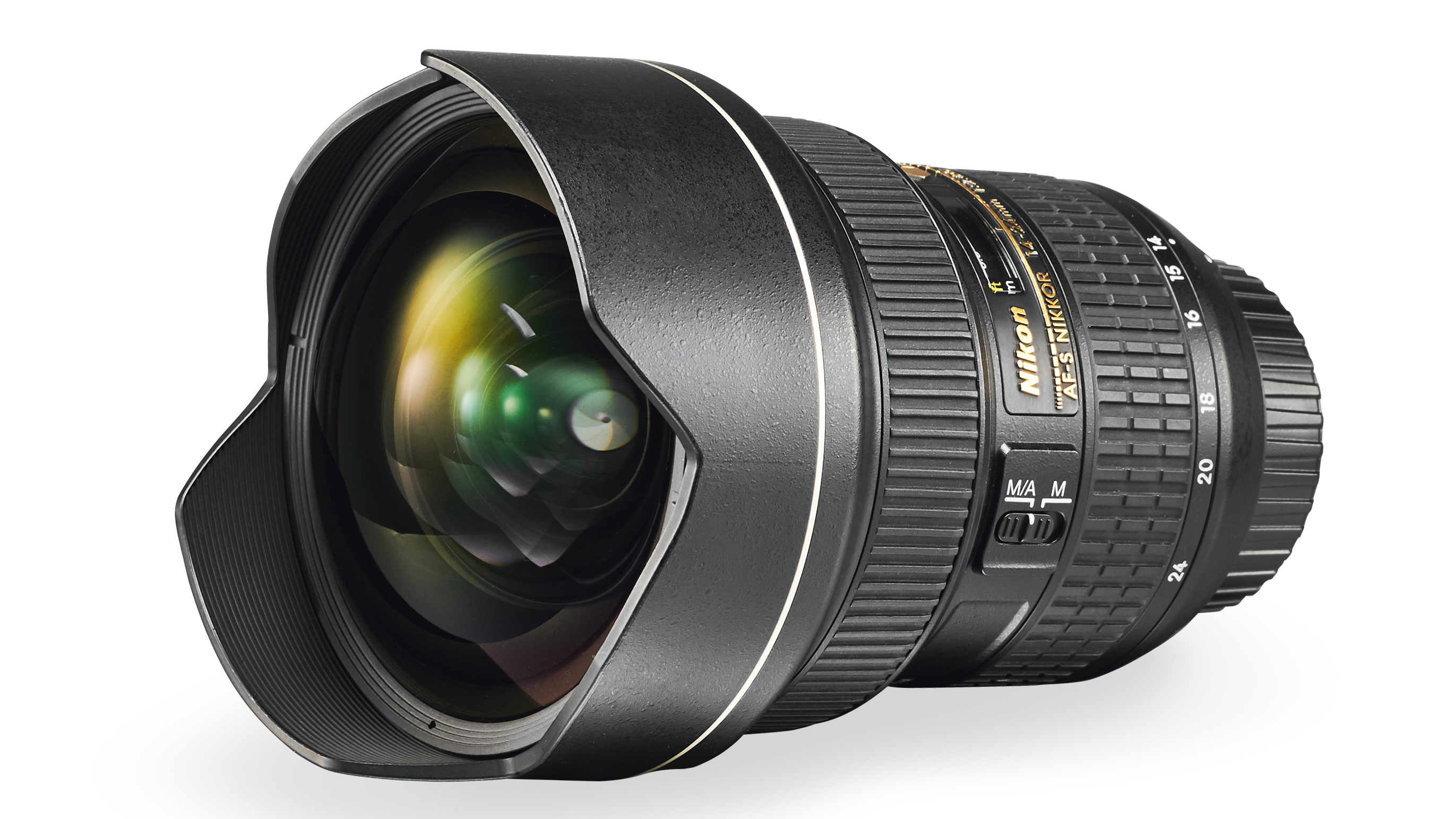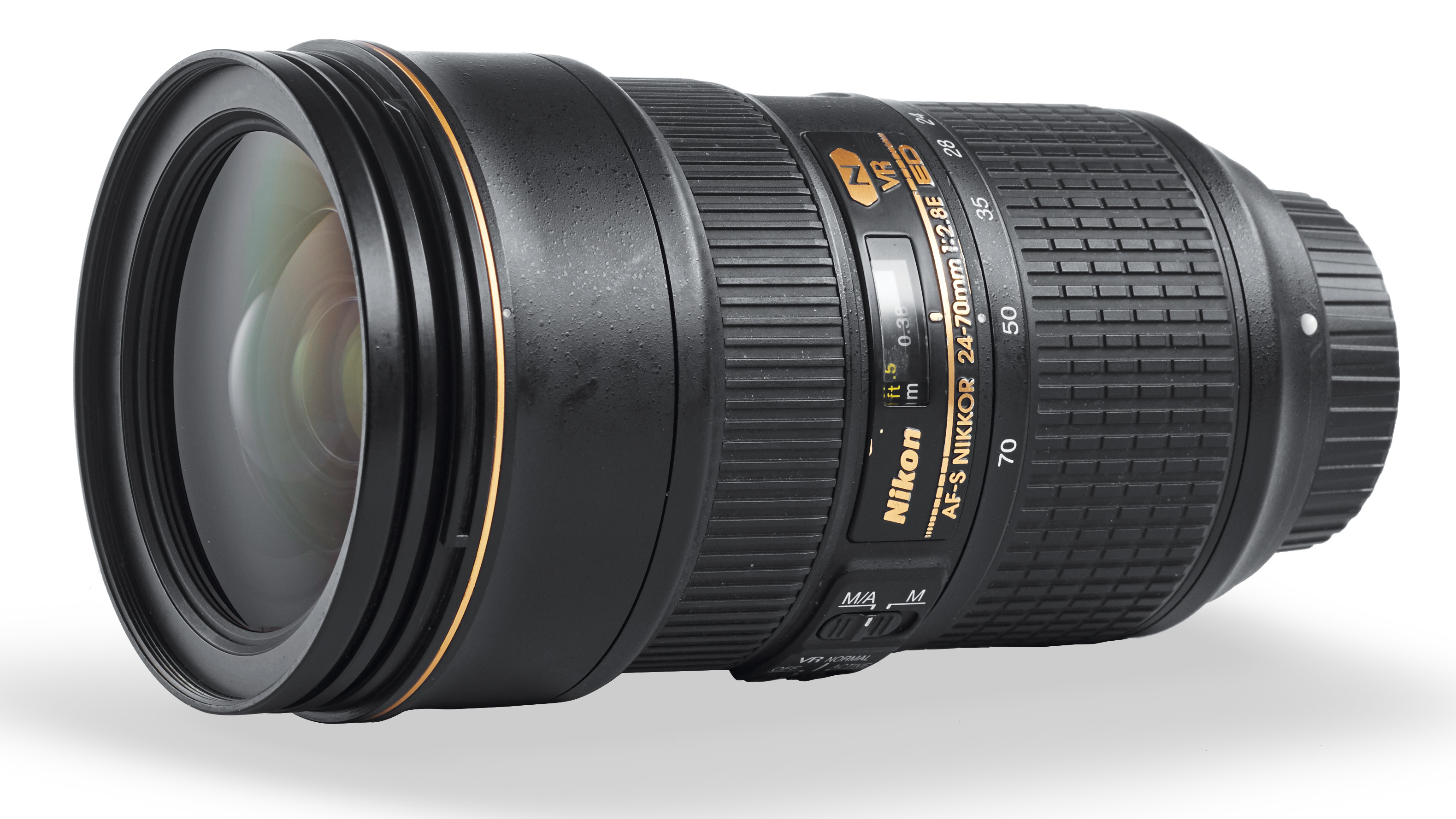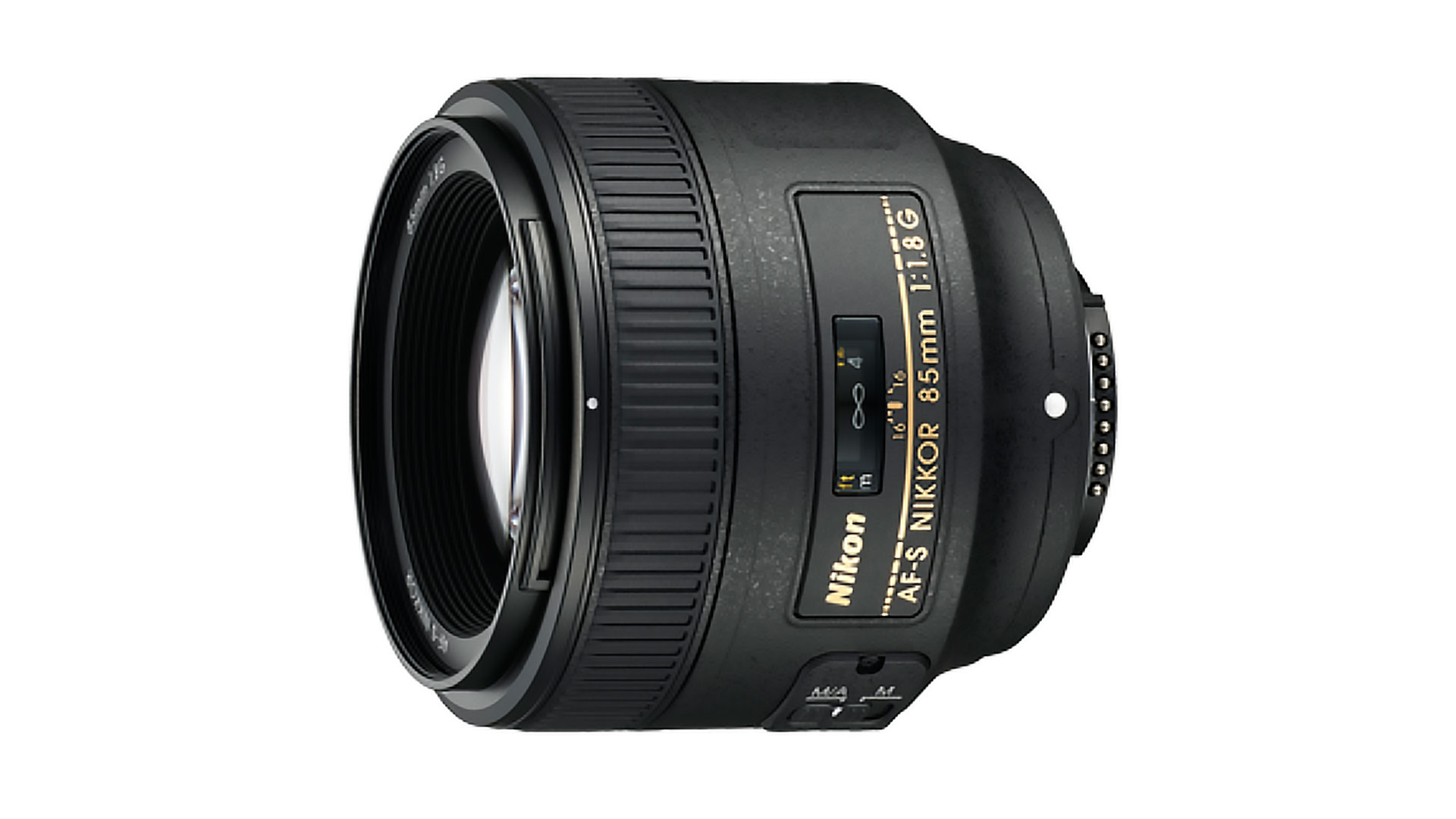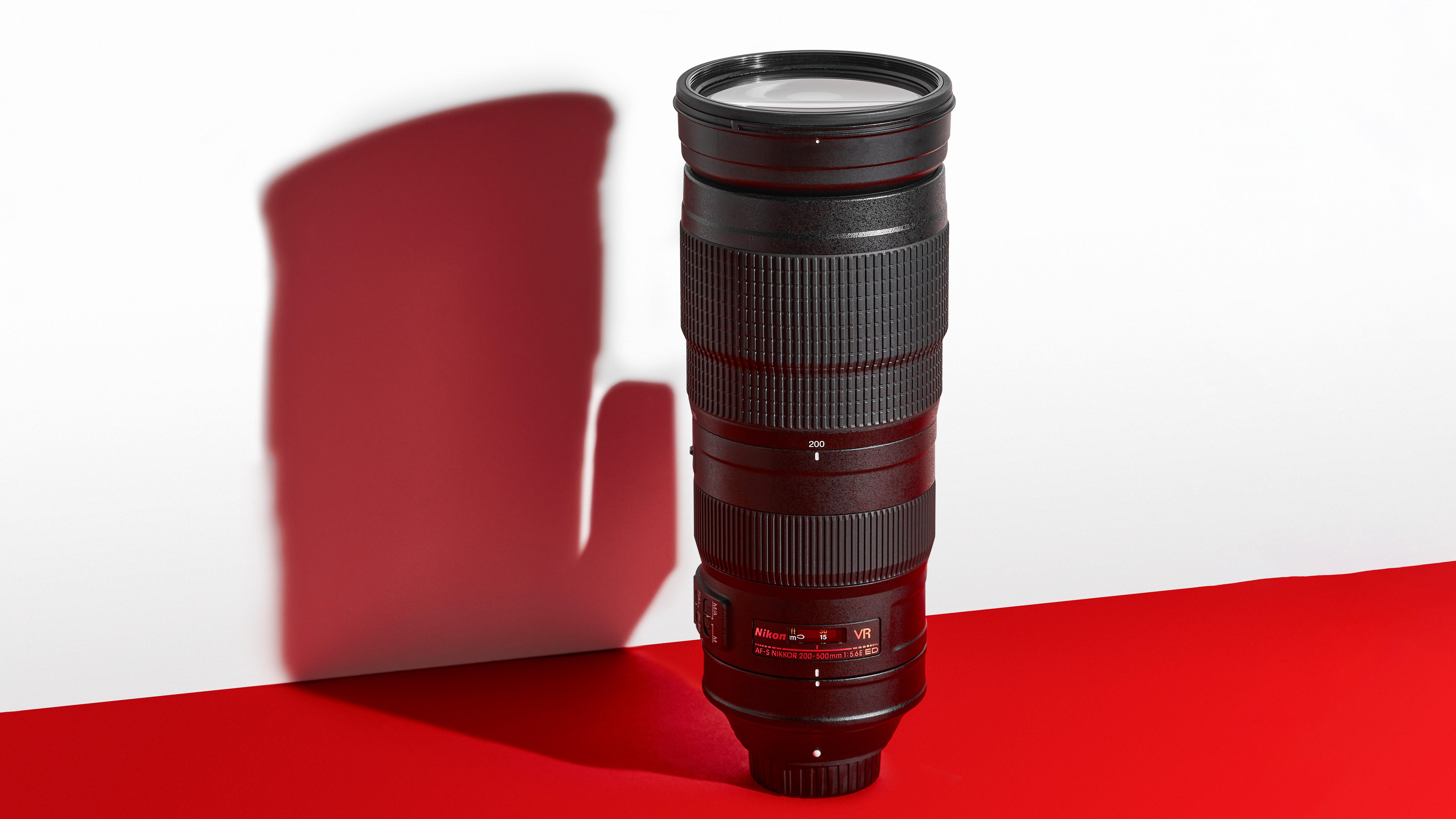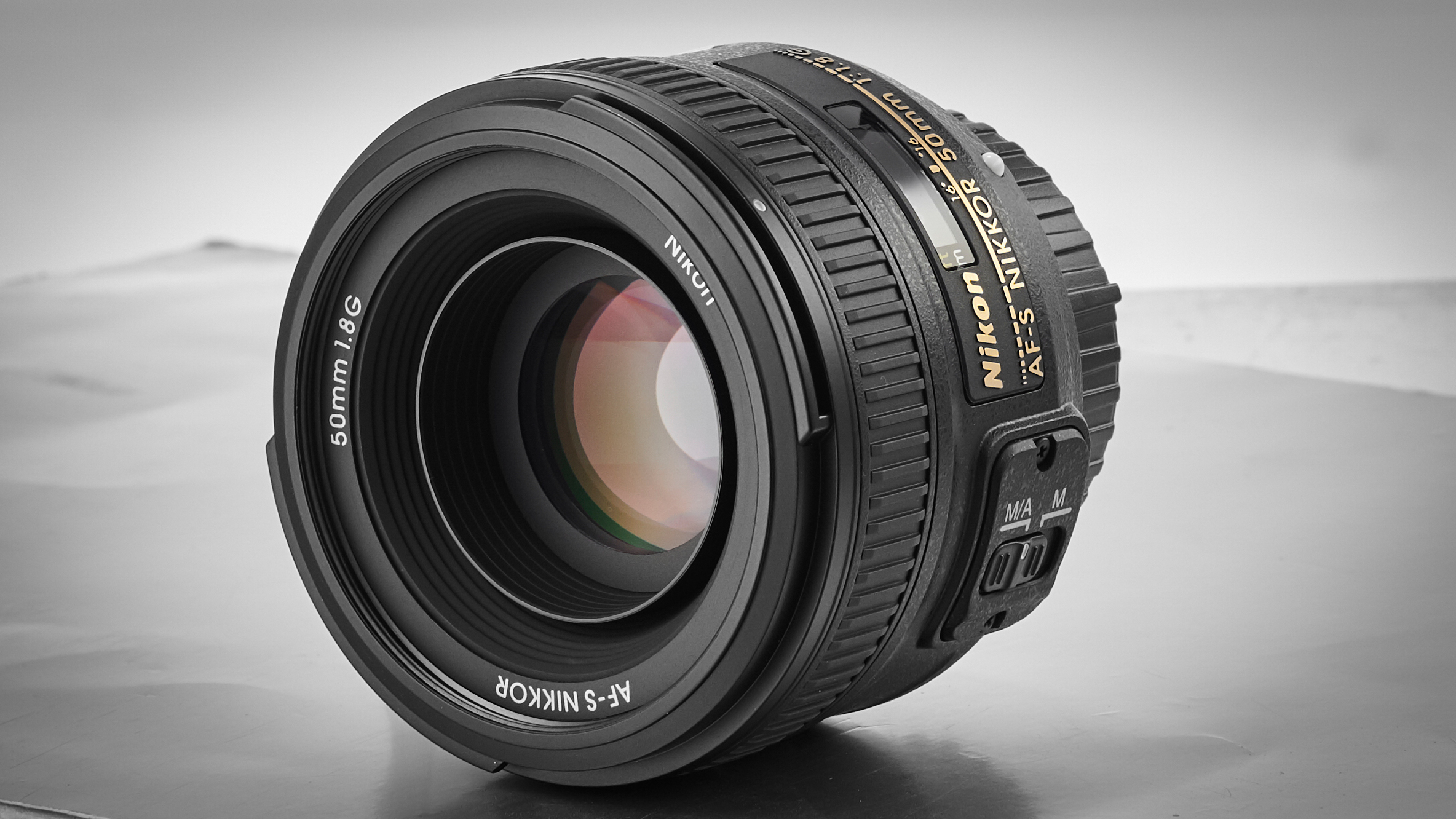The best Nikon lenses for DSLRs in 2025: brilliant lenses for Nikon F-mount
We pick the best Nikon lenses for all kinds of photography on Nikon F-mount DSLRs, including budget-friendly options

Choosing the best Nikon lenses for DSLRs means answering a couple of questions – but don't worry, they're not difficult! The first thing to establish is what sensor size your camera uses – full frame (FX) or APS-C (DX) – as in most cases, this will affect which lenses are the best fit. The second, much more fun question is... what do you want to shoot?
Lenses for Nikon DSLR cameras come in two sizes: full frame or APS-C (DX). You can use any full frame lens on a DX camera, but there will be a 'crop factor' which makes the lens's angle of view look narrower. This can be a bonus with telephoto, portrait, or macro lenses, but with smaller DX-format cameras you need ultra-wide lenses and standard zooms that are specifically designed for the smaller format. You can use DX lenses on a full frame camera, but they will automatically crop to the smaller sensor size.
And as for what you want to shoot – well, that's a lot more subjective. In this list I've pared things down to just a few of my all-time favorite Nikon F-mount lenses, but hopefully I've still got you covered. And if you're still looking for a camera, check out our essential rundown of the best Nikon cameras, which includes several DSLRs.

Matthew Richards is a photographer and journalist who has spent years using and reviewing all manner of photo gear. He is Digital Camera World's principal lens tester and a Nikon aficionado, and has personally handpicked all the lenses in this guide as perfect companions for most of us using Nikon DSLRs.
The Quick List
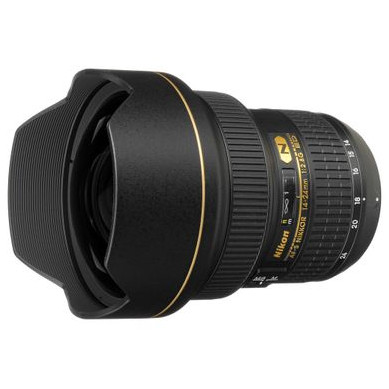
Ideal for landscapes, Nikon's 14-24mm rectilinear zoom lens delivers sumptuous image quality right to the very corners of the frame, with a constant f/2.8 aperture.
Read more below
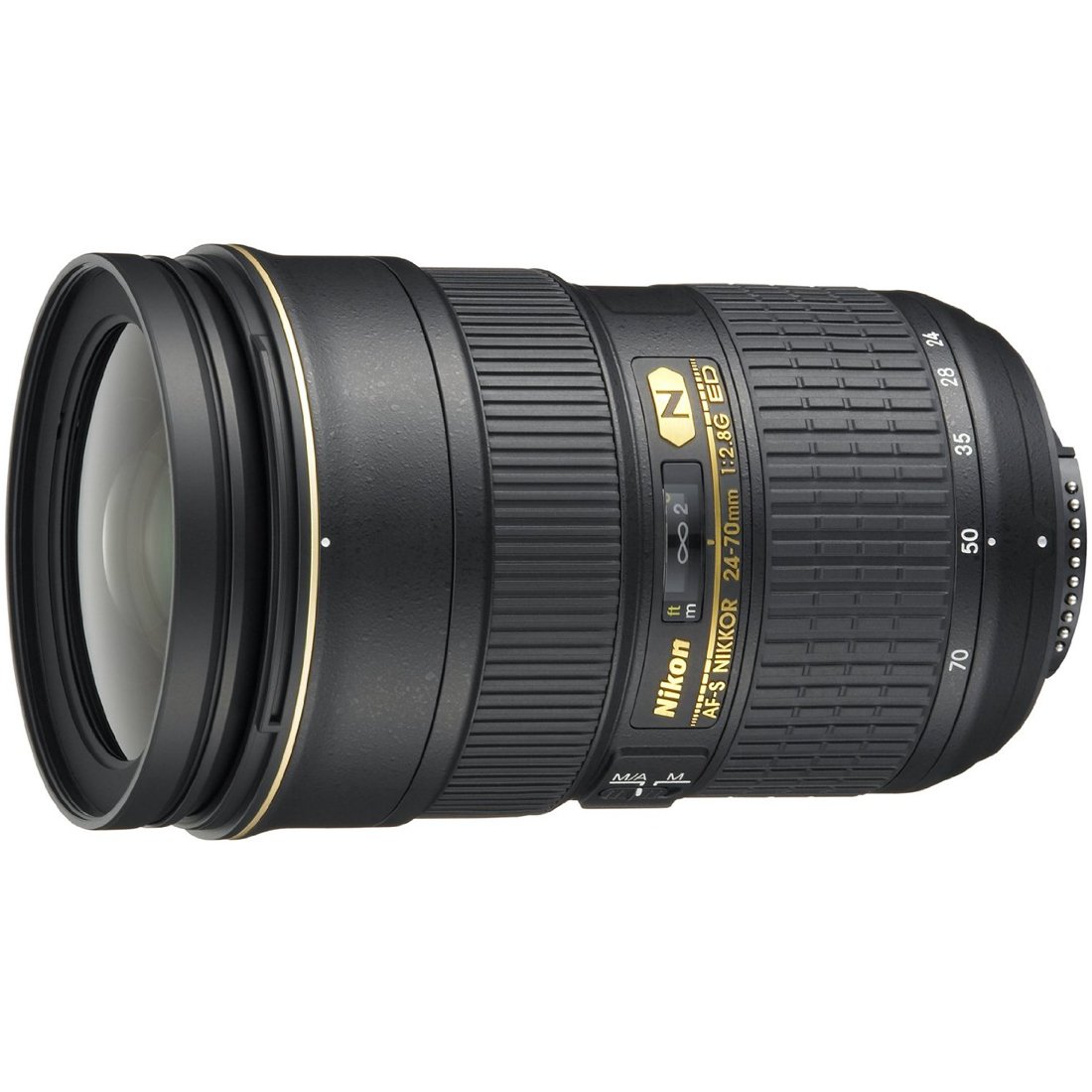
A heavy-duty professional workhorse lens, this high-end standard zoom for Nikon DSLRs delivers the goods optically and boasts 4-stop VR stabilization.
Read more below
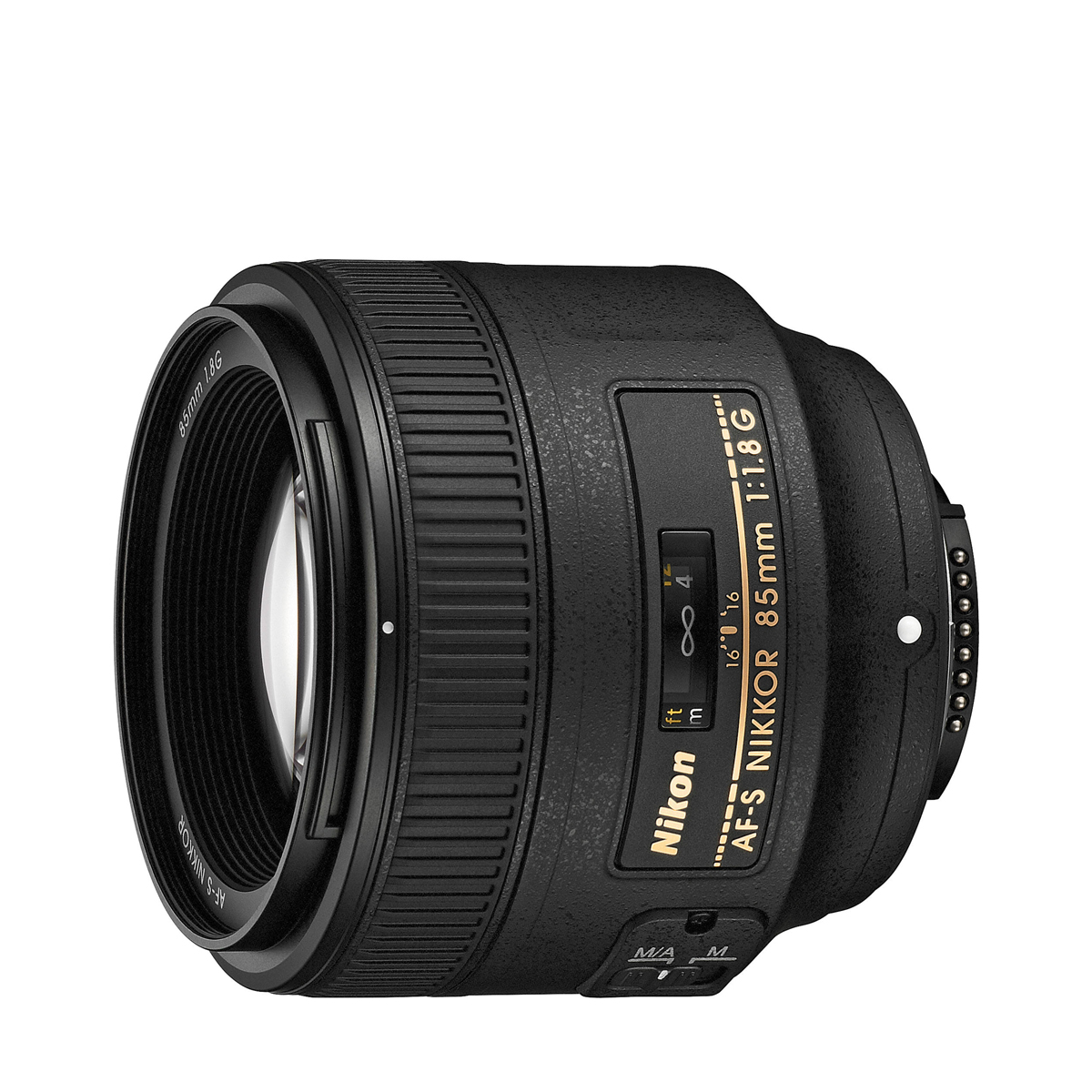
Nikon also has a slightly faster 85mm f/1.4G, but this alternative delivers plenty of quality and lovely bokeh for much less outlay.
Read more below…
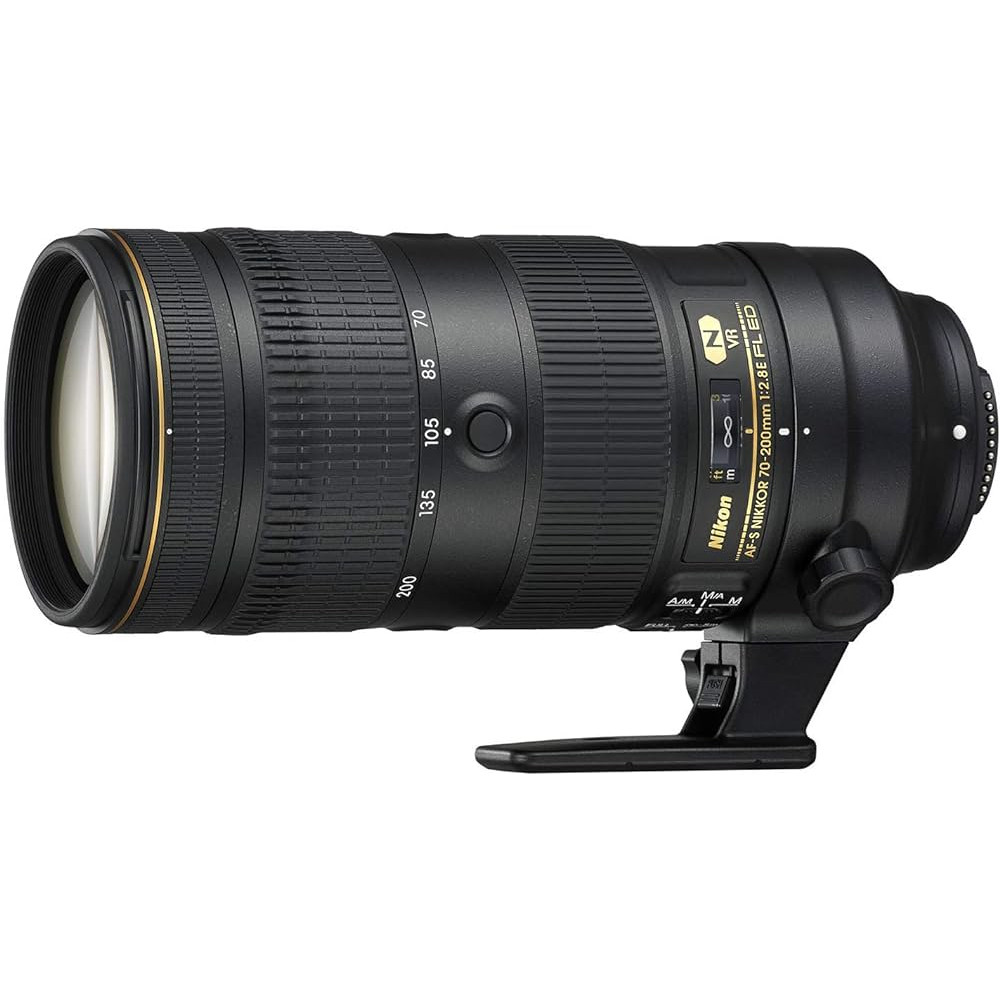
In the classic professional 70-200mm focal length configuration, Nikon's AF-S 70-200mm is a big beast of a lens for those who demand (and will pay for) top-tier quality.
Read more below

This super-telephoto really covers the distance, making it my ideal choice for sports and wildlife photography, plus air shows and more.
Read more below
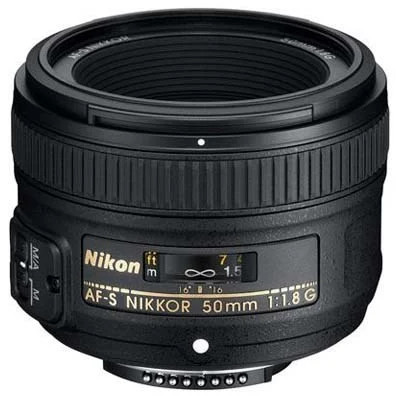
A 50mm prime is one of the best investments you can make for day-to-day photography, and Nikon's affordable nifty-fifty is an ideal example of the genre.
Read more below
Best Nikon DSLR lenses
Why you can trust Digital Camera World
Best ultra-wide zoom
Specifications
Reasons to buy
Reasons to avoid
Own-brand Nikon lenses are often relatively expensive compared with third-party equivalents from the likes of Sigma and Tamron. That’s certainly the case with this lens, which is much pricier than the likes of the Sigma 14-24mm f/2.8 DG HSM Art and the Tamron SP 15-30mm f/2.8 Di VC USD G2, the latter boasting the bonus of optical image stabilization – though these lenses aren't as easy to get hold of as they used to be. The Nikon is solidly built and delivers good all-round performance but loses out slightly to the Sigma for outright image quality.
Read more: Nikon AF-S 14-24mm f/2.8 ED review
Features ★★★★☆ | Key features include three aspherical and two ED optical elements, plus Nano Crystal Coat. |
Design ★★★★☆ | Typical of ‘trinity’ zoom lenses, this one has pro-grade design and build quality, but the hood isn’t removable. |
Performance ★★★★☆ | All-round performance is pretty convincing but there’s a lot of barrel distortion at the short end and corner-sharpness is mediocre. |
Value ★★★★☆ | It’s pricey to buy but still good value for one of Nikon’s top-range F-mount lenses. |
Best standard zoom
Specifications
Reasons to buy
Reasons to avoid
Nikon’s latest and greatest F-mount ‘trinity’ standard zoom for DSLRs is built like a tank and is relatively large for this class of lens. Image quality and overall performance are the key aspects of the design, with no concession to keeping the size and weight down. It’s certainly super-sharp but I don't feel it's outstanding in control over color fringing and distortions.
Read more: Nikon AF-S 24-70mm f/2.8E ED VR review
Features ★★★★★ | This latest version includes ASP/ED, AS, ED, and HRI glass, optical stabilization and an electromagnetically controlled aperture diaphragm. |
Design ★★★★★ | Build quality is super-solid and sturdy and although it’s a big lens, it doesn’t extend during zooming. |
Performance ★★★★☆ | It’s good overall but sharpness could be better and distortion and fringing benefit from auto corrections. |
Value ★★★★☆ | The official price is pretty steep but the lens is often discounted, making it better value. |
Best portrait lens
Specifications
Reasons to buy
Reasons to avoid
Known for their supreme ability to shoot great portraits, 85mm lenses are sought after for their flattering perspective compression and wide maximum apertures, with this lens being no exception.
The Nikon AF-S 85mm f/1.8G, while not as fast as the 85mm f/1.4G, offers much better value for money considering its maximum aperture is only marginally narrower. Fast autofocusing and optical characteristics like soft vignetting and gorgeous bokeh make this a favored lens among portrait photographers.
Read more: Nikon AF-S 85mm f/1.8G review
Features ★★★★☆ | Ring-type ultrasonic autofocus, an aspherical element and Super Integrated Coating are among the top features. |
Design ★★★★☆ | The design includes an auto/manual focus mode switch and a focus distance scale, plus a weather-sealed mounting plate. |
Performance ★★★★☆ | The lens delivers good sharpness and clarity with nicely smooth bokeh. |
Value ★★★★★ | It’s naturally not as fast as an f/1.4 prime but terrific value at the price. |
Best professional zoom
Specifications
Reasons to buy
Reasons to avoid
With an epic feature set matched by the top-notch build quality, all-around performance, and image quality, this is a stunning 70-200mm f/2.8 zoom lens. It builds on the success of previous editions, bringing a raft of new features including fluorite glass, uprated optical stabilization, and an electromagnetically controlled aperture diaphragm, although the last of these makes it incompatible with some older Nikon DSLRs. The only catch is that the Sigma 70-200mm f/2.8 DG OS HSM Sports lens performs every bit as well and is much less expensive to buy.
Read more: Nikon AF-S 70-200mm f/2.8E FL ED VR review
Features ★★★★★ | Top-class features include 6 ED elements, fluorite and HRI elements, super-fast autofocus, optical VR and an electromagnetic aperture diaphragm. |
Design ★★★★★ | The design is top-end pro-grade, with all the handling extras you could wish for plus a really robust magnesium alloy build. |
Performance ★★★★★ | It’s the latest and greatest of Nikon’s 70-200mm f/2.8 F-mount lenses with performance to satisfy demanding professionals. |
Value ★★★★☆ | The list price is pretty steep but discounted offers are often available, making it better value. |
Best sports lens
Specifications
Reasons to buy
Reasons to avoid
Nikon has long made an Nikkor AF-S 80-400mm f/4.5-5.6G ED VR lens – but, while it delivers excellent image quality, the focal length is relatively limited, and it’s relatively pricey. This newer 200-500mm zoom is more affordable and packs in smart additional features.
These include a constant-aperture design, and an electromagnetically controlled diaphragm that ensures greater exposure consistency in rapid-fire shooting. Uprated VR (Vibration Reduction) is good for 4.5 stops and adds a ‘Sport’ mode for improved stability while tracking moving subjects.
In our lab tests it showed good levels of sharpness remain impressively consistent throughout the entire zoom range, and overall image quality is of a high standard. Autofocus and stabilization systems work quickly and effectively. The maximum focal length falls a little short compared with Nikon-mount Sigma and Tamron 150-600mm zooms but performance levels are very good.
Read more: Nikon AF-S 200-500mm f/5.6E ED VR review
Features ★★★★★ | There’s fast autofocus, 4.5-stop dual-mode stabilization and, unusually for a super-telephoto zoom, a constant aperture rating. |
Design ★★★★☆ | Handling is excellent and the lens isn’t overly heavy for its type. It’s also very nicely built but not fully weather-sealed. |
Performance ★★★★★ | Performance is excellent in all respects, from autofocus and stabilization to image quality throughout the whole zoom range. |
Value ★★★★☆ | The Nikon is very good value for money as an own-brand lens, competing with third-party contenders. |
Best nifty-fifty
Specifications
Reasons to buy
Reasons to avoid
The Sigma 50mm f/1.4 is a great lens, but heavy and expensive and perhaps a bit too much for many Nikon DX camera owners. For budget portraiture on a DX-format body, look no further than this Nikon 50mm f/1.8. It’s two-thirds of a stop slower but performs very well and is cheap to buy.
Considering the downmarket price, the build quality feels pretty good, right down to the weather-sealed metal mounting plate. The lens comes complete with a hood, despite the front element being deeply recessed within the barrel. You get ring-type ultrasonic autofocus complete with full-time manual override and a focus distance scale positioned beneath a viewing panel. One final advantage is that this is actually an FX full-frame lens, so if you move up to a full frame Nikon in the future, you can use it as a compact standard lens.
Read more: Nikon AF-S 50mm f/1.8G review
Features ★★★★☆ | Ring-type ultrasonic autofocus, an aspherical element and Super Integrated Coating are among the top features. |
Design ★★★★☆ | The design includes an auto/manual focus mode switch and a focus distance scale, plus a weather-sealed mounting plate. |
Performance ★★★★☆ | The lens delivers good sharpness and clarity with nicely smooth bokeh. |
Value ★★★★★ | It’s naturally not as fast as an f/1.4 prime but terrific value at the price. |
Lab data and comparisons
The graphs below show the comparative performance of the lenses in this guide, based on our in-house lab tests. The Nikon AF-S 50mm f/1.8G and AF-S 85mm f/1.8G lead the group for sharpness, despite being very budget-friendly lenses that work great on both full-frame and APS-C format Nikon DSLRs.
Scores for sharpness and color fringing are averaged from data taken across the entire image frame, from the center to the edges and corners, throughout the aperture range. For zoom lenses, the scores are also averaged from data measured at all marked focal lengths, and the same applies to distortion. Bear in mind that these average values don't fully reflect specific areas of performance. For example, a zoom lens might have noticeable barrel and pincushion distortion at its shortest and longest focal lengths respectively, which tends to average out when looking at the data overall. For more detailed graphs of each lens's performance, which give the full picture, check out the graphs in our full standalone lens reviews.
How to choose the best Nikon lenses for DSLRs
Which Nikon DSLR lenses to get? Some photographers have a very clear idea about their favorite subject matter and it's pretty easy to recommend lenses. Other photographers like to experiment with all kinds of subjects – so if that sounds like you, then you might need a few different lenses, not just one!
There are many, many types of lenses out there, but I've distilled the range into five key types that are universally popular:
1) Ultra-wide zoom: For when you need to get more into the frame. Most people imagine a telephoto zoom to be the most useful extra lens you can have, but actually, a wide-angle zoom can be even more useful, especially if you are interested in travel photography and capturing cramped interiors, big landmarks, or narrow city streets.
Read more: Best wide-angle lenses for Nikon
2) Standard zoom: These offer a versatile focal range, allowing you to shoot anything from landscapes to portraits, and chances are you've already got one, as these are often bundled with Nikon cameras as a 'kit lens' to get you started. While these are good all-rounders that are designed to be compact and affordable before anything else, in time you might decide you need a replacement that offers a longer focal range, a constant maximum aperture or just better all-round picture quality.
Read more: Best standard zoom upgrades for Nikon
3) Telephoto zoom: Most people pick one of these to go with the standard zoom that came with their camera. They are the obvious choice for anyone interested in sports and wildlife photography, or any other time when you can’t get close enough to your subject.
Read more: Best telephoto lenses for Nikon
4) Macro lens: For subjects so close they're right under your nose. Regular lenses can focus quite close, but not close enough to fill the frame with tiny insects and other close-up subjects. But macro lenses are designed to get much closer and are optically optimized to give crystal-clear close-ups.
Read more: Best macro lenses
5) Portrait lens: For flattering features and background blur. The best portrait shots combine an undistorted perspective with a soft background blur. A regular zoom lens might give you the right perspective, but only a dedicated portrait lens with a wide maximum aperture can give those atmospheric blurred backgrounds.
Read more: Best portrait lenses
How we test lenses
Our team reviews and tests Nikon DSLR lenses both through standardised lab tests and by using them in real-world conditions for different uses. We find the combination of lab and real-world testing works best, as each reveals different qualities and characteristics of the lens.
Our lab tests are carried out in scientifically controlled conditions using the Imatest testing suite – analysis software that measures resolution in line widths/picture height, a measurement widely used in lens and camera testing.
To choose the best Nikon DSLR lenses to include in this guide, we considered our lab test results and our hands-on reviews. We also considered what each lens is useful for to provide recommendations for different needs. We also factored in value to make recommendations for photographers on different budgets. You can read more about how we test.
The best camera deals, reviews, product advice, and unmissable photography news, direct to your inbox!
Matthew Richards is a photographer and journalist who has spent years using and reviewing all manner of photo gear. He is Digital Camera World's principal lens reviewer – and has tested more primes and zooms than most people have had hot dinners!
His expertise with equipment doesn’t end there, though. He is also an encyclopedia when it comes to all manner of cameras, camera holsters and bags, flashguns, tripods and heads, printers, papers and inks, and just about anything imaging-related.
In an earlier life he was a broadcast engineer at the BBC, as well as a former editor of PC Guide.
- Adam WaringGuides Editor
